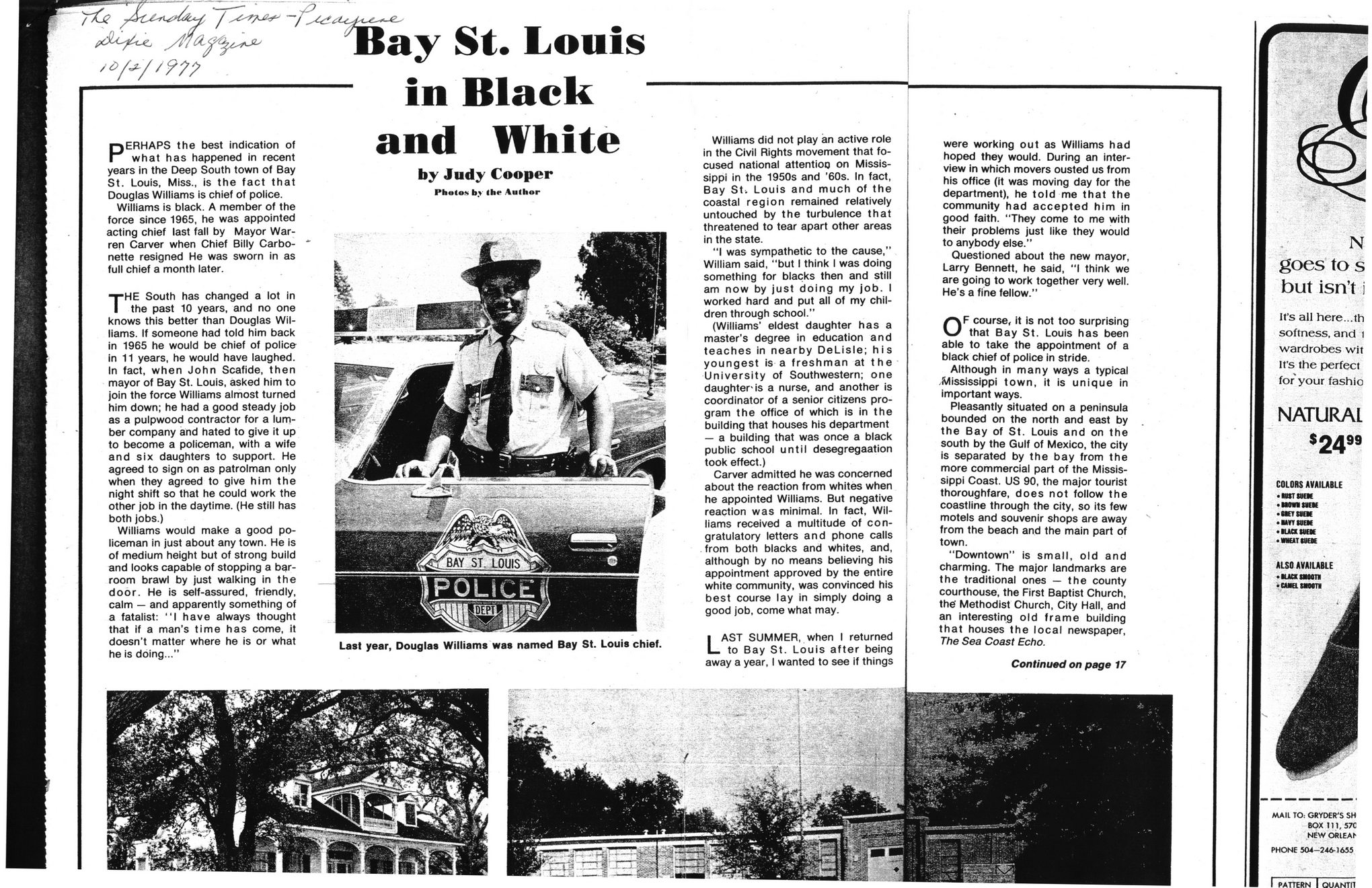This text was obtained via automated optical character recognition.
It has not been edited and may therefore contain several errors.
yfa "fled:, '*/*/'??? PERHAPS the best indication of what has happened in recent years in the Deep South town of Bay St. Louis, Miss., is the fact that Douglas Williams is chief of police. Williams is black. A member of the force since 1965, he was appointed acting chief last fall by Mayor Warren Carver when Chief Billy Carbonette resigned He was sworn in as full chief a month later. THE South has changed a lot in the past 10 years, and no one knows this better than Douglas Williams. If someone had told him back in 1965 he would be chief of police in 11 years, he would have laughed. In fact, when John Scafide, then mayor of Bay St. Louis, asked him to join the force Williams almost turned him down; he had a good steady job as a pulpwood contractor for a lumber company and hated to give it up to become a policeman, with a wife and six daughters to support. He agreed to sign on as patrolman only when they agreed to give him the night shift so that he could work the other job in the daytime. (He still has both jobs.) Williams would make a good policeman in just about any town. He is of medium height but of strong build and looks capable of stopping a barroom brawl by just walking in the door. He is self-assured, friendly, calm ? and apparently something of a fatalist: ?I have always thought that if a man?s time has come, it doesn?t matter where he is or what he is doing...? Bay St. Louis in Black and White by Judy Cooper Photo* bv (he Author Last year, Douglas Williams was named Bay St. Louis chief. Williams did not play an active role in the Civil Rights movement that focused national attentioo on Mississippi in the 1950s and ?60s. In fact, Bay Stv Louis and much of the coastal region remained relatively untouched by the turbulence that threatened to tear apart other areas in the state. ?I was sympathetic to the cause,? William said, ?but I think I was doing something for blacks then and still am now by just doing my job. I worked hard and put all of my children through school.? (Williams? eldest daughter has a master?s degree in education and teaches in nearby DeLisle; his youngest is a freshman at the University of Southwestern; one daughter'is a nurse, and another is coordinator of a senior citizens program the office of which is in the building that houses his department ? a building that was once a black public school until desegregaation took effect.) Carver admitted he was concerned about the reaction from whites when he appointed Williams. But negative reaction was minimal. In fact, Williams received a multitude of congratulatory letters and phone calls from both blacks and whites, and, although by no means believing his appointment approved by the entire white community, was convinced his best course lay in simply doing a good job, come what may. LAST SUMMER, when I returned to Bay St. Louis after being away a year, I wanted to see if things were working out as Williams had hoped they would. During an interview in which movers ousted us from his office (it was moving day for the department), he told me that the community had accepted him in good faith. ?They come to me with their problems just like they would to anybody else.? Questioned about the new mayor, Larry Bennett, he said, "I think we are going to work together very well. He?s a fine fellow." OF course, it is not too surprising that Bay St. Louis has been able to take the appointment of a black chief of police in stride. Although in many ways a typical Mississippi town, it is unique in important ways. Pleasantly situated on a peninsula bounded on the north and east by the Bay of St. Louis and on the south by the Gulf of Mexico, the city is separated by the bay from the more commercial part of the Mississippi Coast. US 90, the major tourist thoroughfare, does not follow the coastline through the city, so its few motels and souvenir shops are away from the beach and the main part of town. ?Downtown? is small, old and charming. The major landmarks are the traditional ones ? the county courthouse, the First Baptist Church, the' Methodist Church, City Hall, and an interesting old frame building that houses the local newspaper, The Sea Coast Echo. Continued on page 17

Williams, Douglas 004